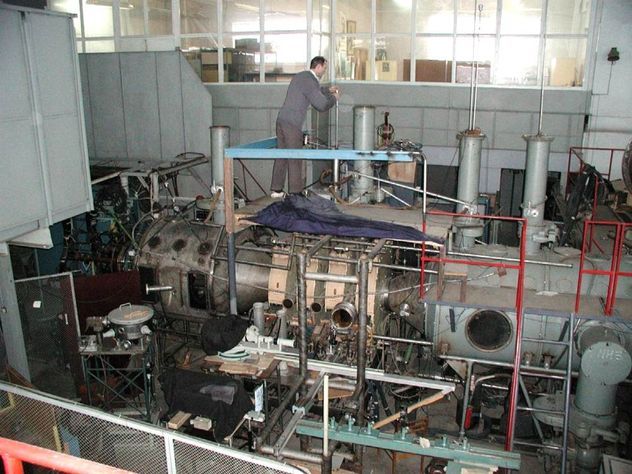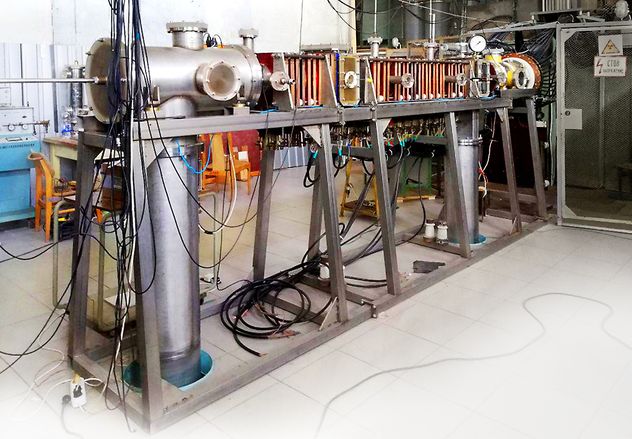Quasi-Stationary Plasma Accelerators
Quasi-stationary plasma accelerator QSPA Kh-50
QSPA Kh-50 is largest and most powerful device among quasi-stationary plasma accelerators. For long term, this facility has been used for simulation experiments which are reproduced conditions of transient events (disruptions, VDE and ELMs) relevant to fusion reactor. The QSPA allows to study the behavior of structural elements of the reactor under the impacts of plasma with required parameters and irradiation doses.

Quasi-stationary plasma accelerator QSPA Kh-50
Experimental simulations of the transient events in the international thermonuclear reactor ITER are carried out with powerful quasi-stationary plasma accelerator QSPA Kh-50. The supersonic flows of dense magnetized plasma with velocities up to 500 km/s, ion current of 10 MA and energy density up to 40 MJ/m2 were obtained. This plasma accelerator is unique for adequate modeling experiments on the interaction of plasma with fusion reactor materials.
Essential data of QSPA Kh-50:
| Discharge voltage | ≤15kV |
| Discharge current | ≤700kA |
| Pulse duration | 250μs |
| External magnetic field | ≤0.54T |
| Plasma stream energy density | 0.5…30MJ/m2 |
| Target heat load | ≤1.1MJ/m2 |
| Average heat flux | ≤4.4GW/m2 |
| Heat flux factor | ≤69.6MWs1/2m-2 |
| Maximal energy of particles | 0.2…0.9keV |
| Average plasma density | 0.2…7 1022 m-3 |
| Maximum value of plasma pressure | 0.3…1.8MPa |
| Plasma stream diameter | ≤0.18m |
Quasi-stationary plasma accelerator of new generation QSPA-M
The QSPA-M is a new generation of quasi-stationary plasma accelerator with an external longitudinal B-field up to 1T. QSPA-M was put into operation in December 2015.
This facility has been developed as a novel powerful test-bed facility of compact geometry for experimental studies of plasma–surface interaction (PSI) in the conditions simulating the transient events in future fusion reactor in the divertor region.

Quasi-stationary plasma accelerator of new generation QSPA-M
It provides the magnetized plasma transportation in the rising external magnetic field and plasma impact to the surface. The external longitudinal magnetic field linearly increased along the axis of the plasma propagation from 600Gs (in between the electrode space) up to 1T (at the distance of about 1.85m from the accelerator).
The main tasks of QSPA-M are PSI simulation experiments in wide range of initial conditions and experimental study of energy transfer from plasma stream to surface of target. Simultaneously QSPA-M facility can used for providing another simulation experiments with magnetized plasma stream.
Essential data of QSPA-M:
| Discharge voltage | 10kV |
| Discharge current | 400kA |
| Pulse duration | 100μs |
| External longitudinal magnetic field | up to 1T |
| Energy density in axis region | 0.3-1MJ/m2 |
| Maximum value of plasma pressure | 0.3MPa |